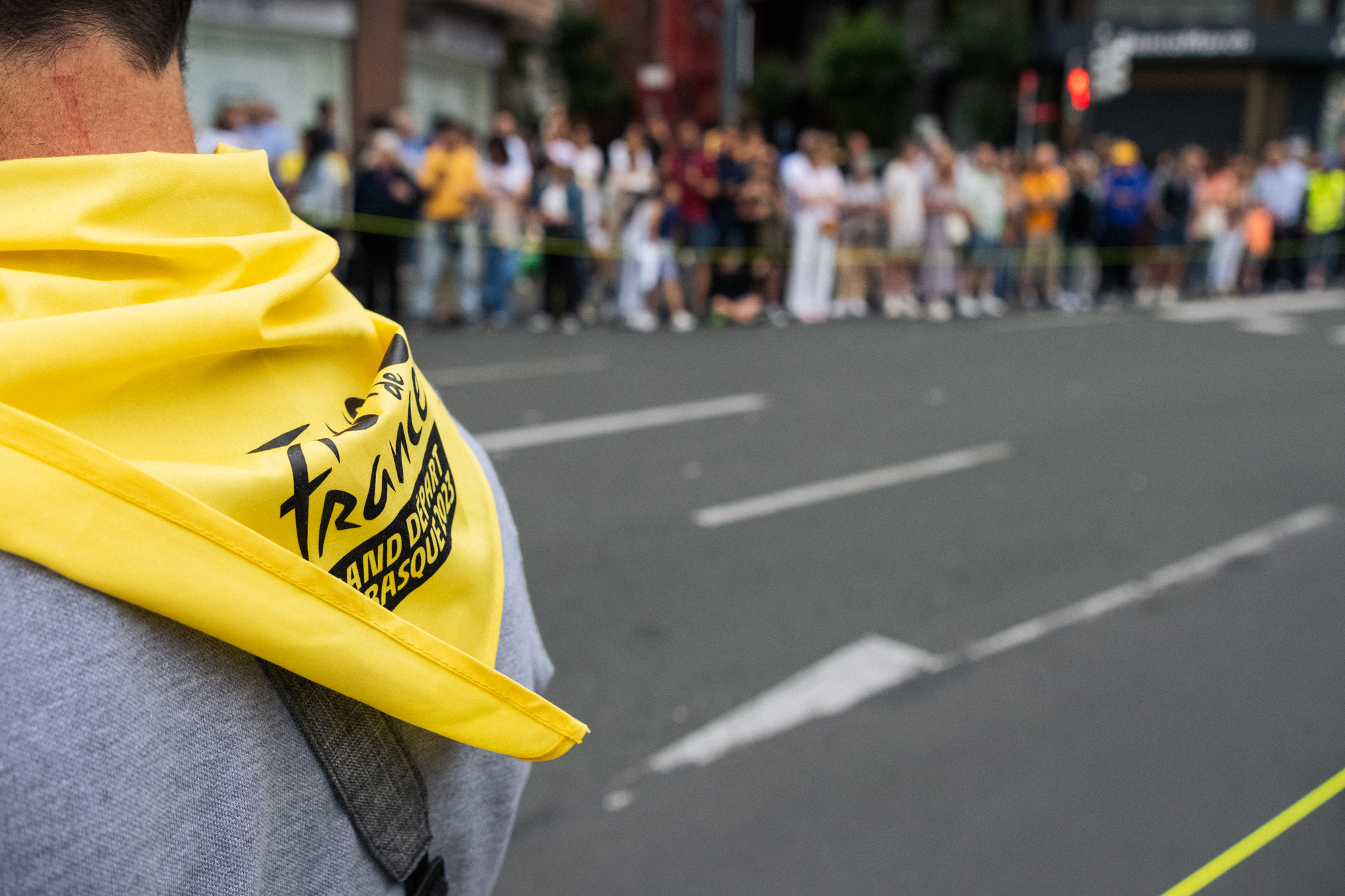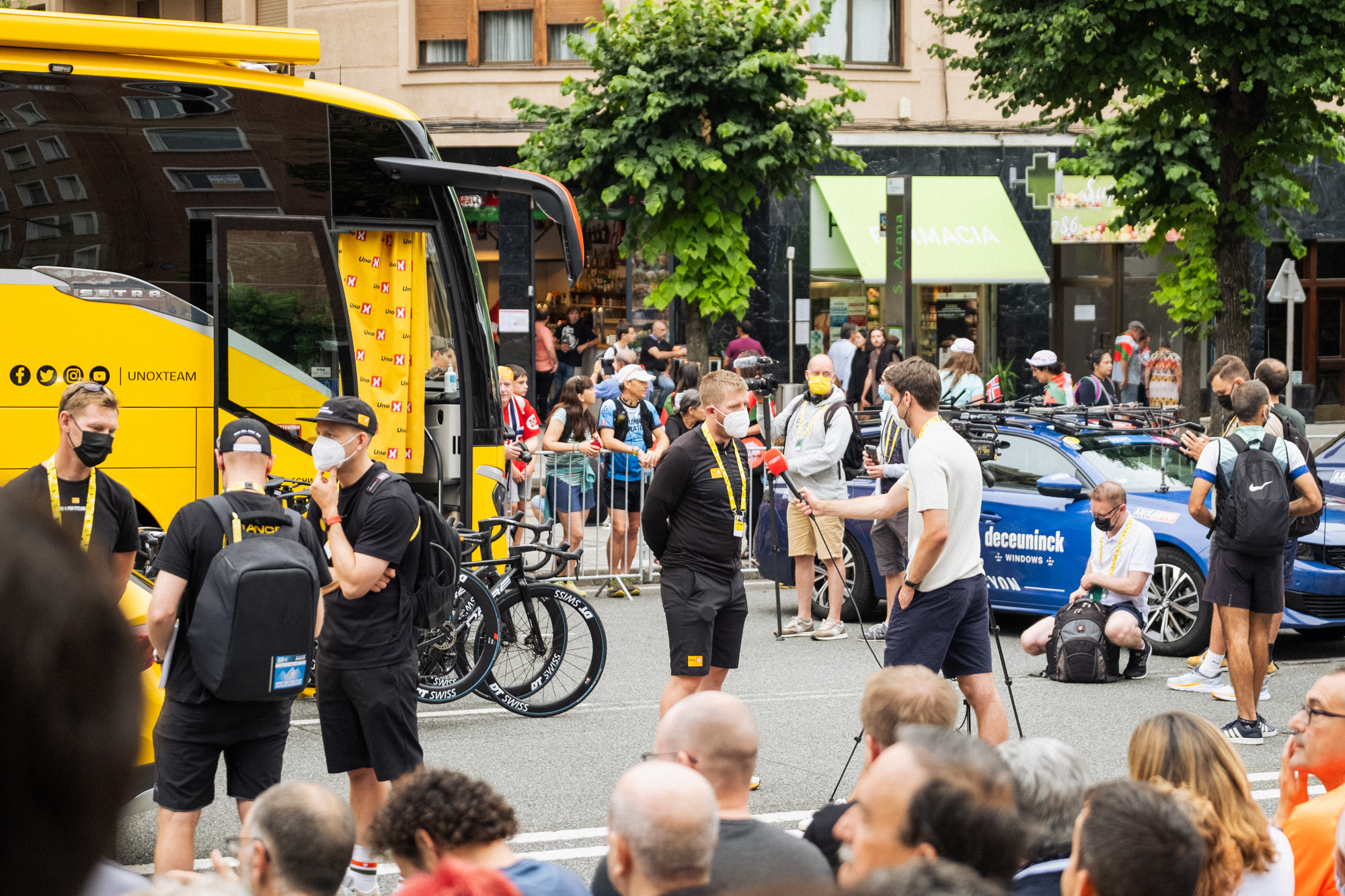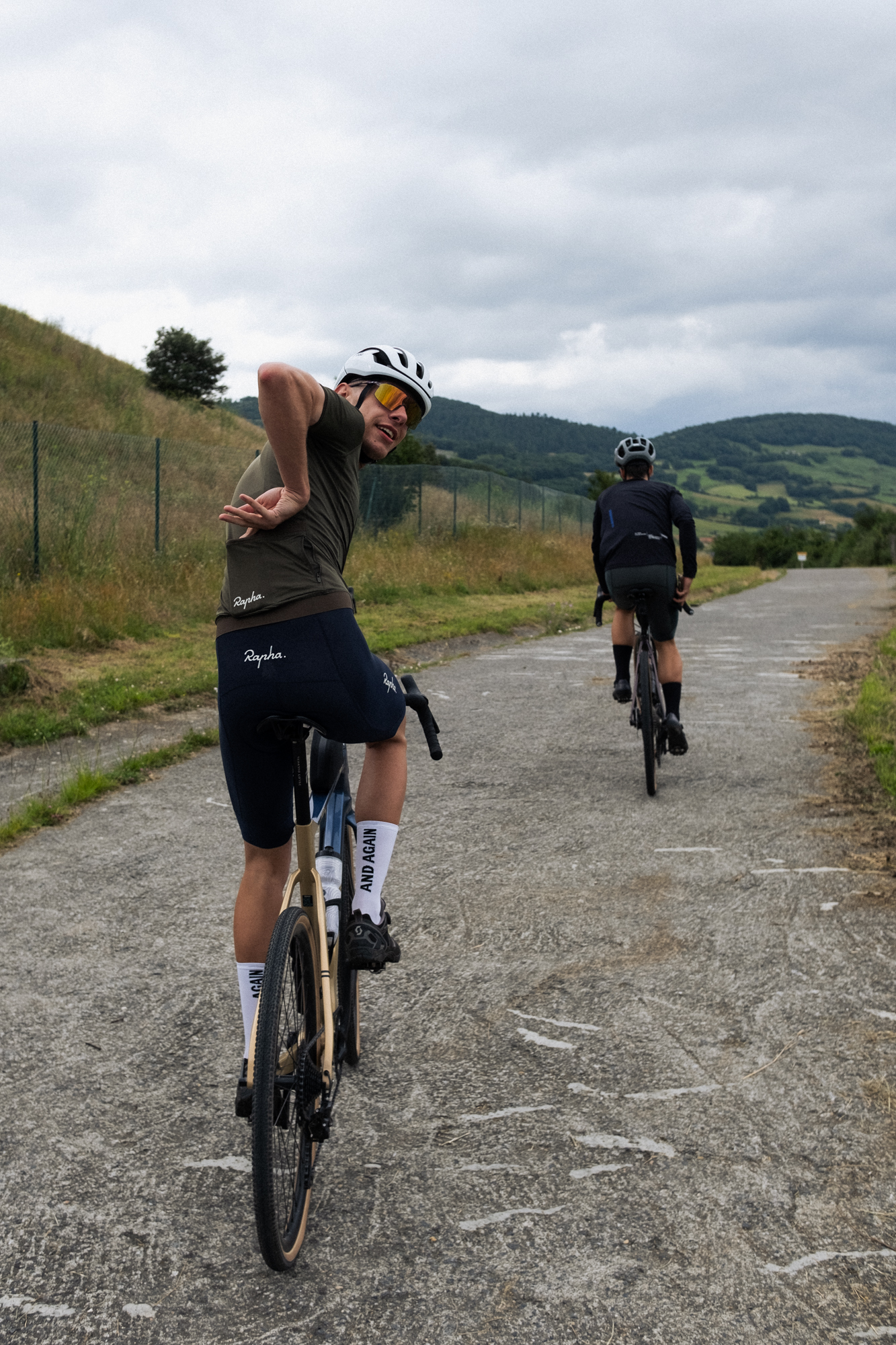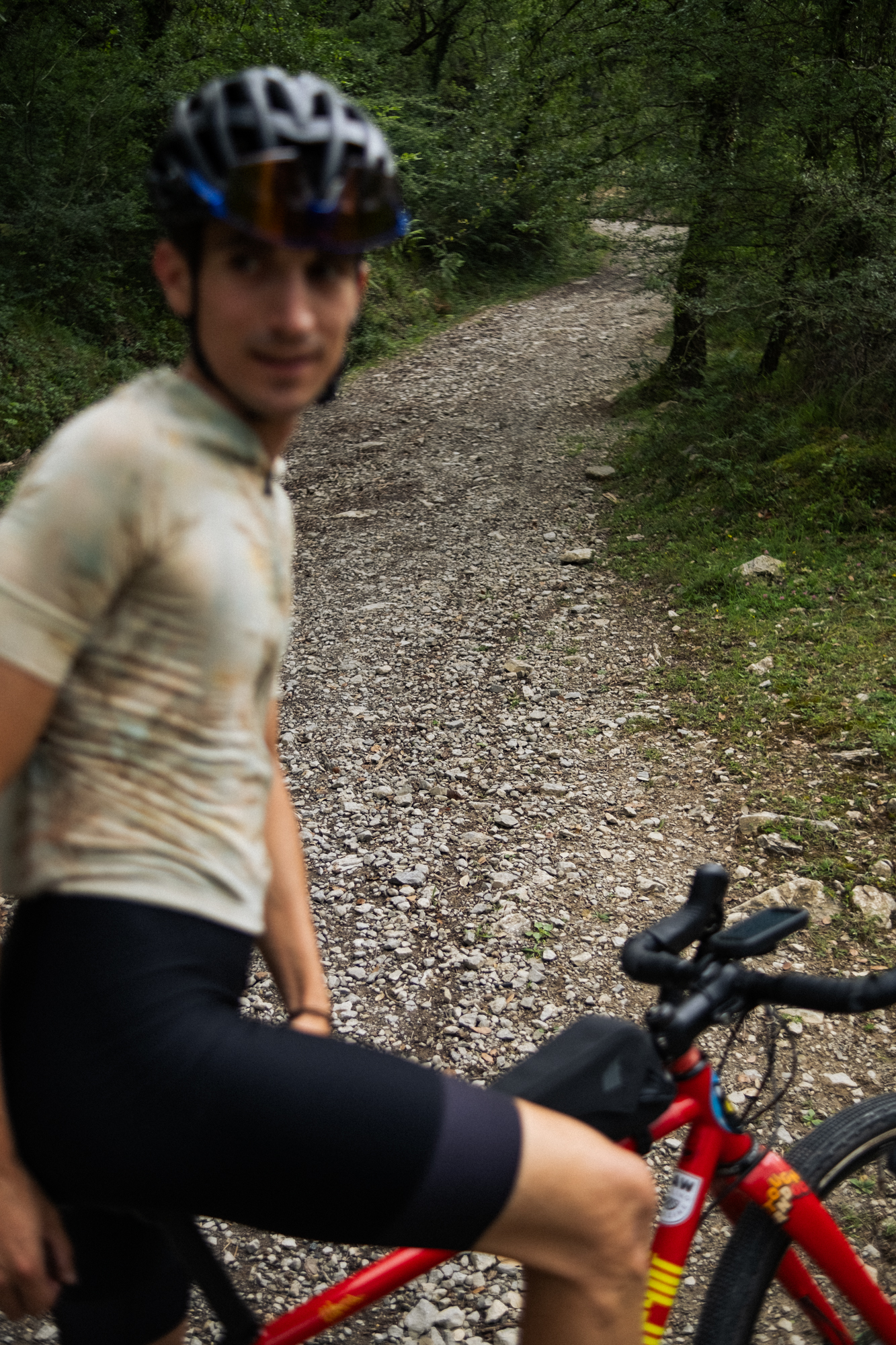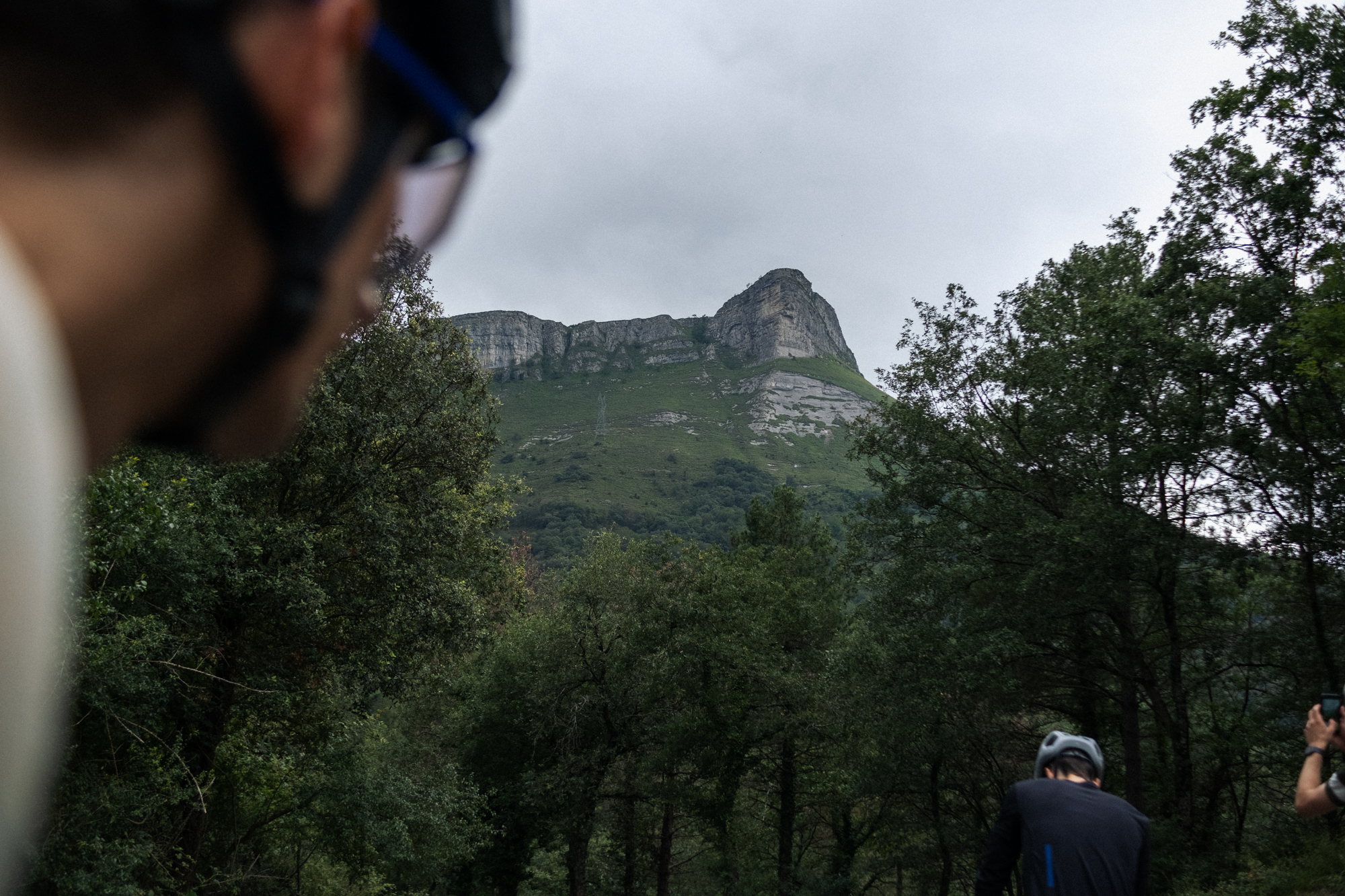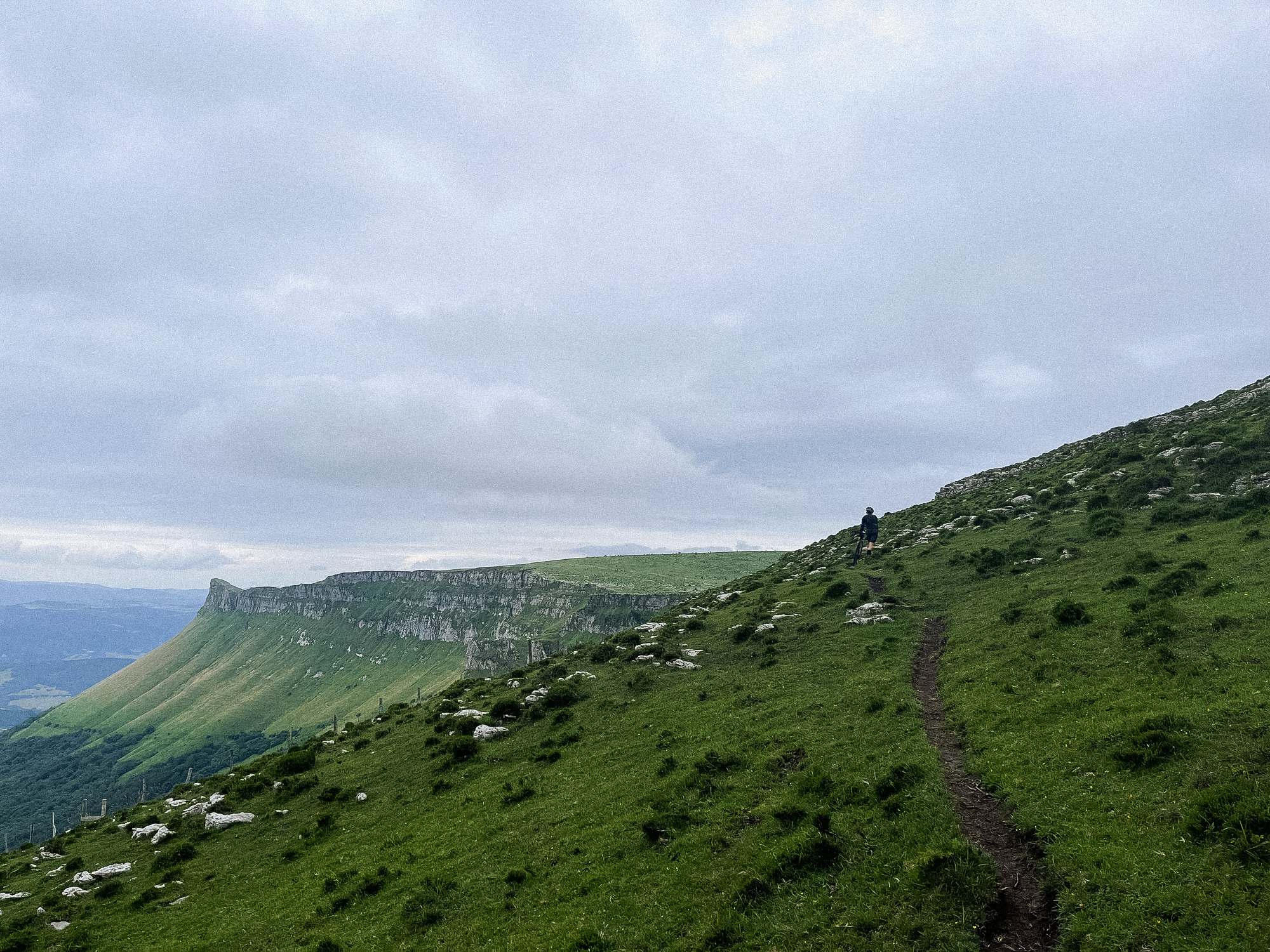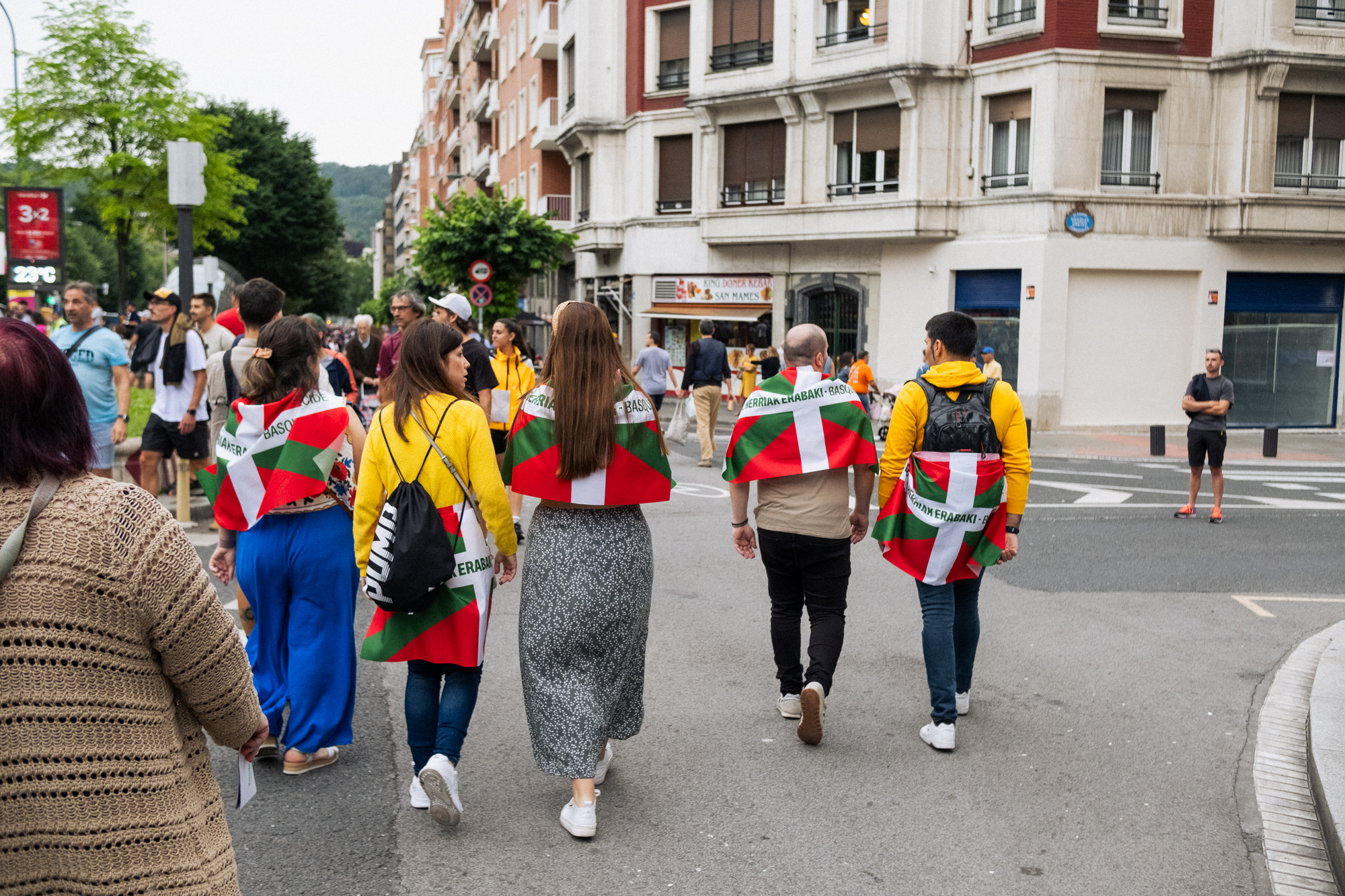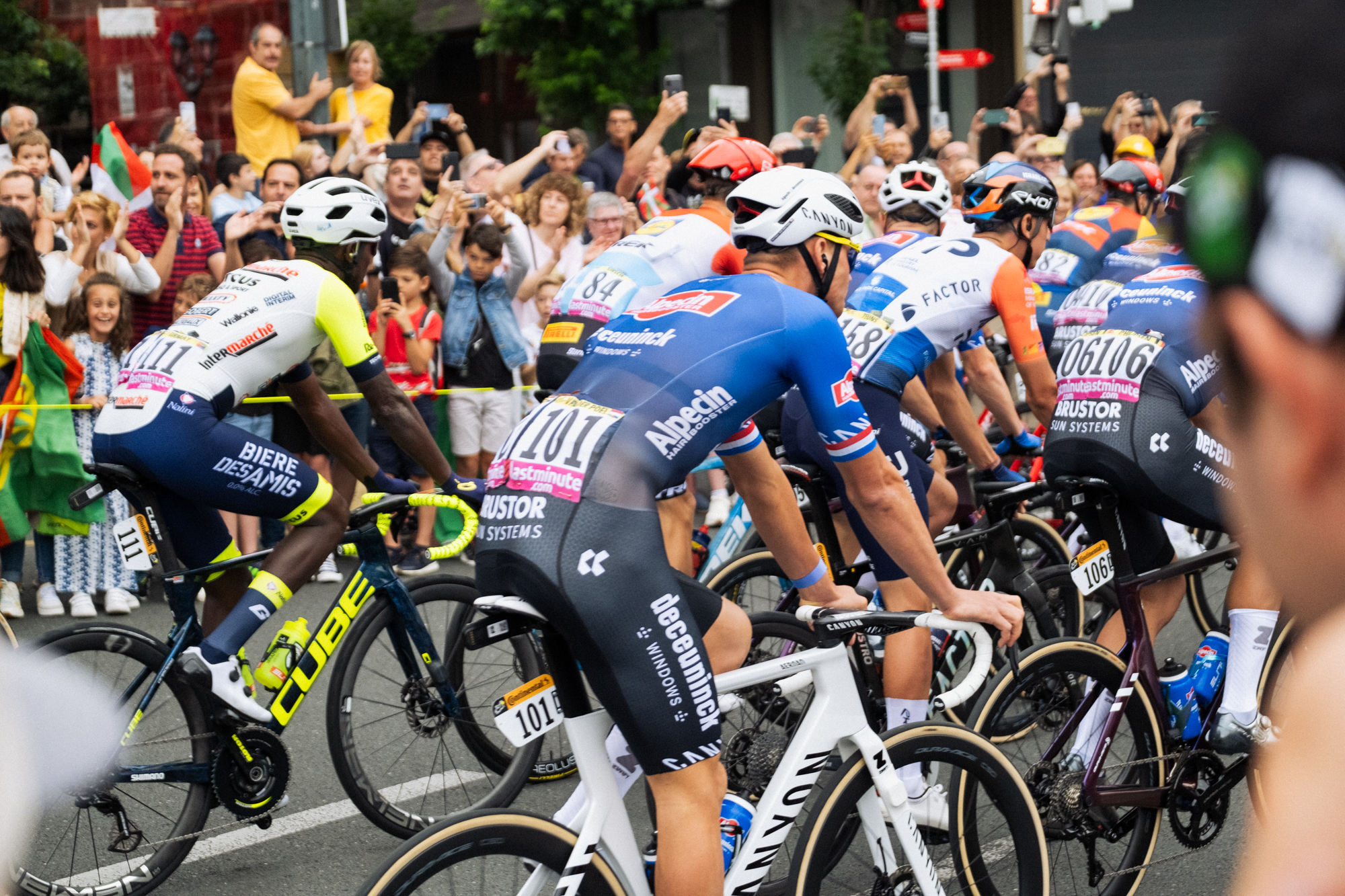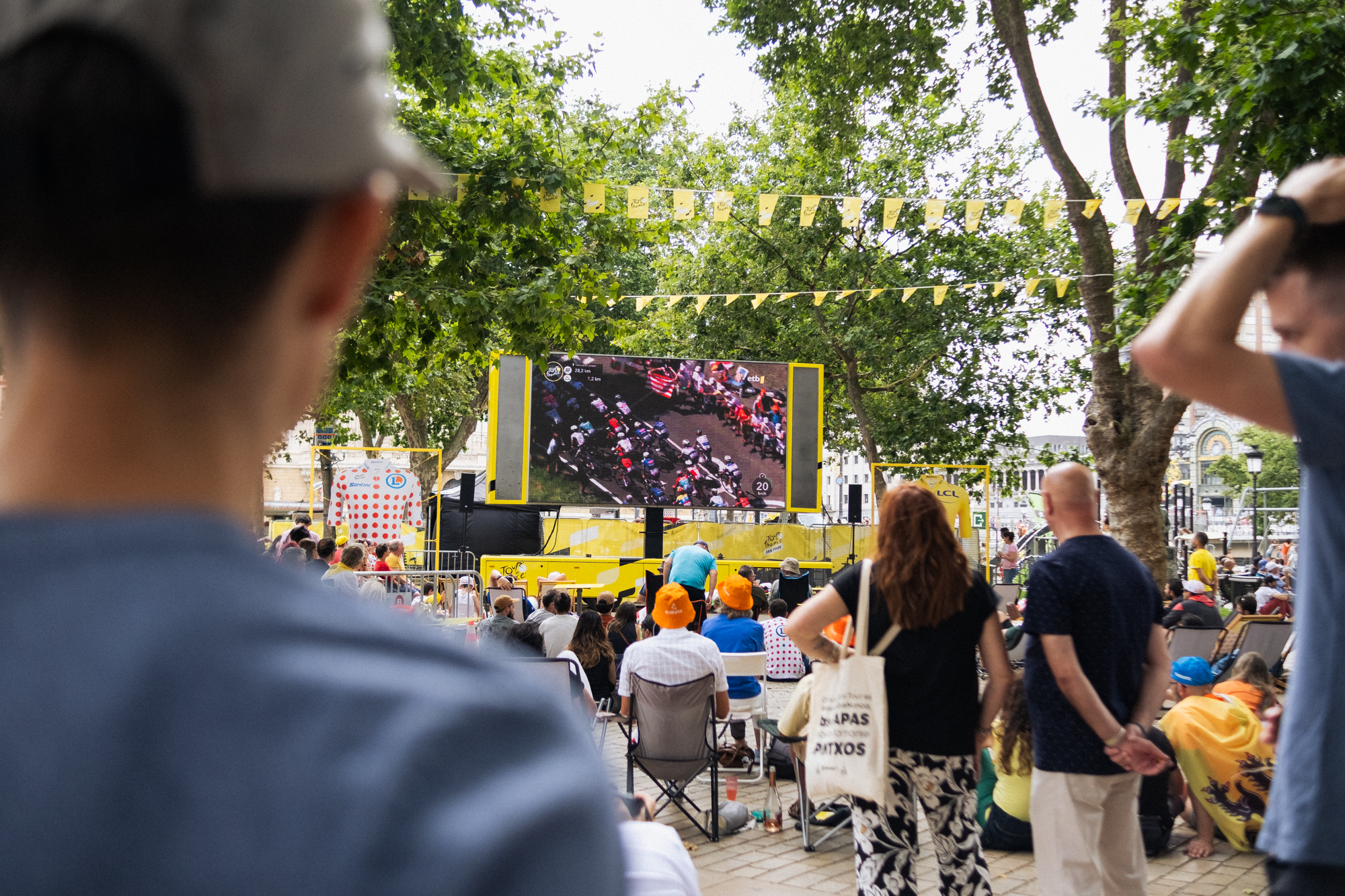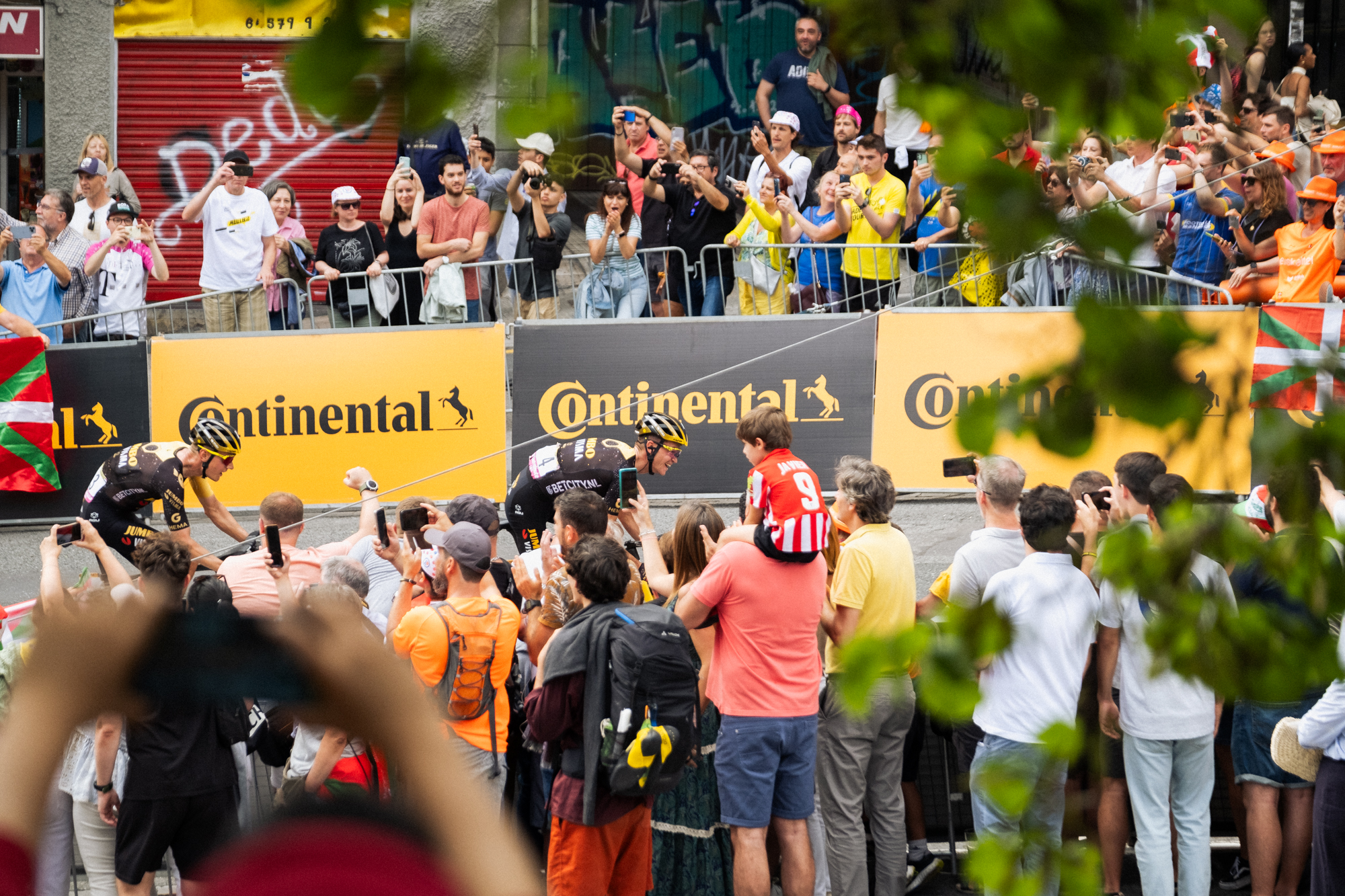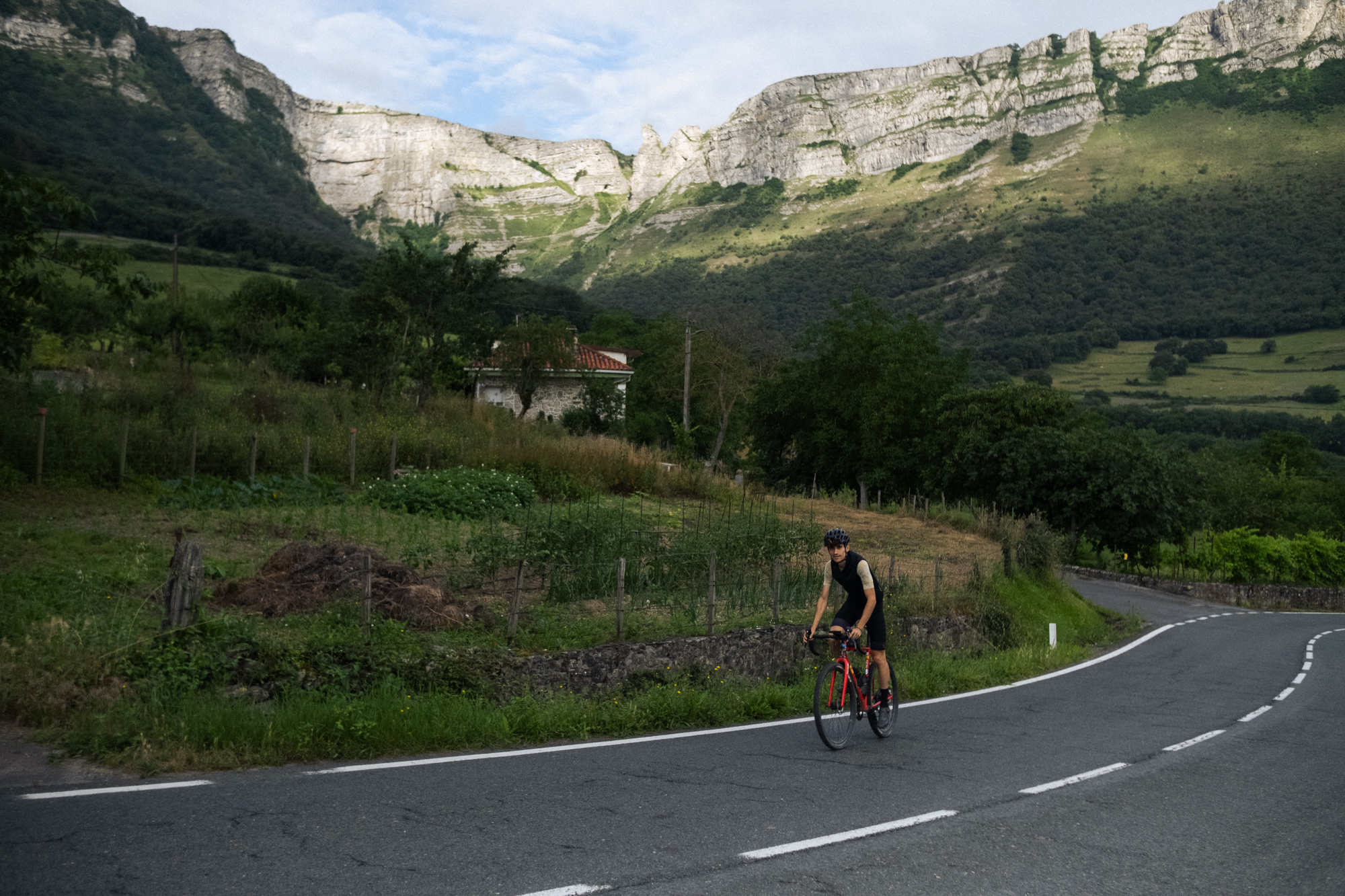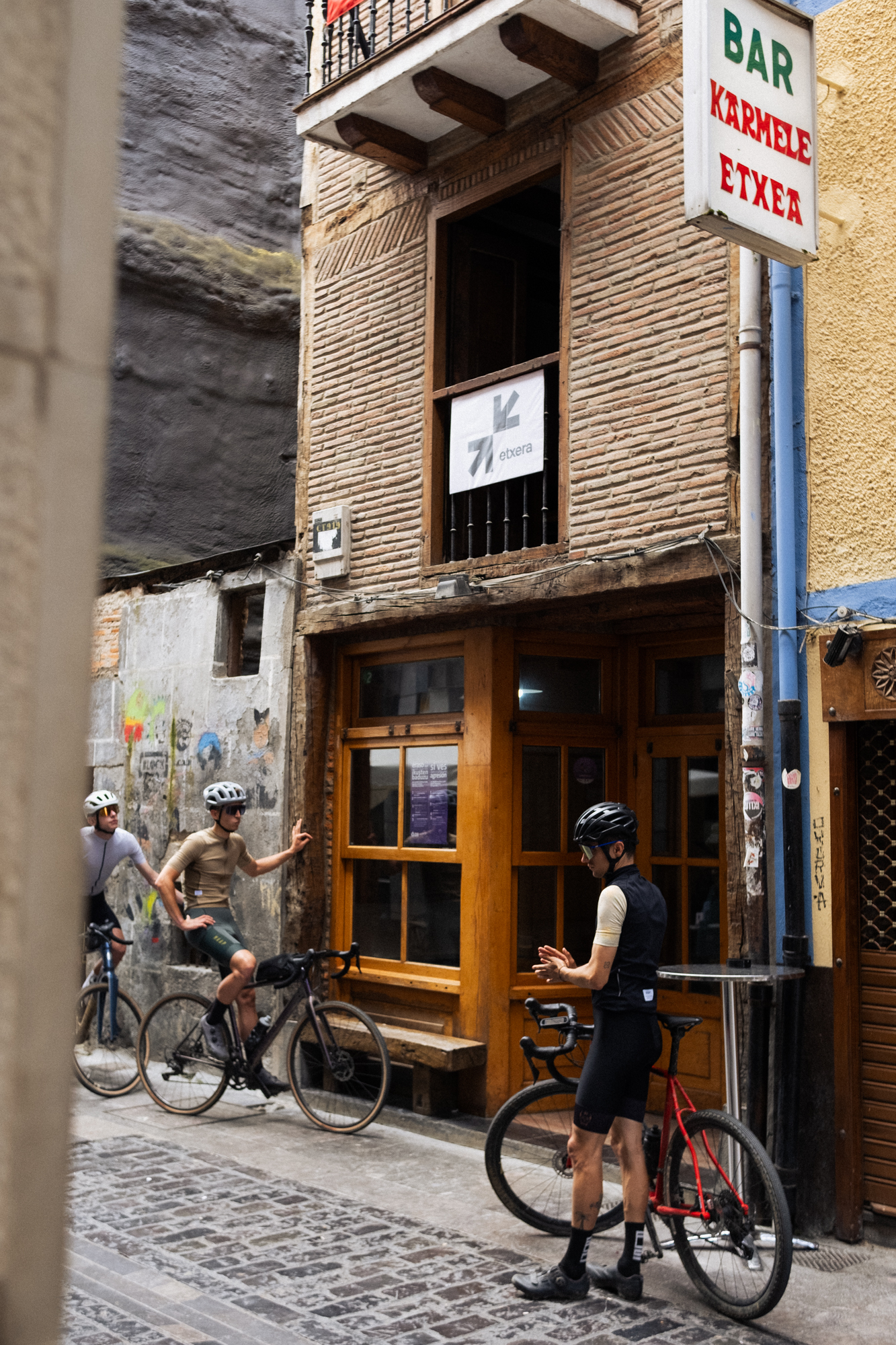As adventure seekers, we usually just need a simple reason to go out on a weekend escape with our bikes. This time there were multiple incentives, so nothing could prevent us from bringing our gravel bikes to Sierra Salvada, a small mountain range between the Basque Country and Castilla y León.
Over the past few months, we have spent countless hours creating a repository of gravel routes all over Spain ready to be downloaded to our GPS units as soon as we find a reason to tackle them. This time we set our eyes on Sierra Salvada, not only because of the beauty of the region but because of the big event that would take place during those same dates just a few kilometers away.
The Tour de France started this year in Bilbao, and we had to be there in one way or another. Unlike other aficionados coming from different parts of Spain and Europe, we do not consider ourselves as pure roadies so we preferred to bring our gravel bikes. Still, we planned some time to see the race from close and get immersed in the vibes all around the city. Additionally, we had to find time for some formal discussions and, obviously, a couple of rides to make the most of the area, all that in barely 48 hours.
Day 1 – Is gravel supposed to be that hard?
Once we arrived at our accommodation on Friday, June 30th, and everything we had brought in the campers was already correctly placed inside, we started getting ready for a planned ride of 60 kilometers. It was already 5 pm, and the kilometer-elevation gain ratio, together with the uncertainty about the state of the surfaces in the region, made us a bit worried about making it back at a reasonable time.
A couple of kilometers in, we already realized that the off-road sections there are not as smooth as what we are used to in Catalonia or Belgium. We were in a good mood so we didn’t mind putting our feet on the ground when it was apparent that those rocky ramps were not compatible with our bike setup.
“How many kilometers have we already done?”, asked one of us. “Well.. we have only covered 10 kilometers in the first hour”, was the shy answer, aware that we would have to hurry up if we wanted to complete the full route. Our average speed didn’t increase that much over the next kilometers and the terrain ahead looked as rough as what was already behind us, so we had to decide what to do next.
We lost count of the number of times we had to stop to open a fence that prevented cattle from trespassing. Wired fences, wooden fences, high fences, low fences… We ended up mastering the technique: the first one to arrive opened it and the last one closed it as if nothing had happened.
After the last fence, we got to a paved road that then turned into a gravel road with some concrete sections, taking us to the top of the Sierra. After a long and hard climb of 11 km and 750 m of elevation gain, we got to the top of the plateau which left us in awe. The view of the whole valley ahead was mesmerizing, and the surrounding meadow-like landscape was even dreamier.
As we rode along the plateau we had to improvise the path, as no trace could be found, only those made by the free cattle and horses that were pasturing around us. However, the grassy terrain resulted to be ideal for our gravel bikes and we had tons of fun as we descended and climbed the winding hills.
After being guided only by our GPS for several kilometers, we finally reached a gravel trail that brought us back to civilization. We got to the top of a snaky paved descent, the Puerto de Orduña, that took us back to our headquarters. We arrived at 9:15 PM, so we would have dinner at Spanish time.
Day 2 – Grand Départ in the Basque country
Watching the Tour de France as spectators, enjoying the well-known gastronomy of Bilbao and simply going with the flow. The second day was about everything except riding our bikes, which allowed for more casual conversations and alternative ways to bond as a team.
We were hyped for the Tour, the same as the thousands of cycling fans that took over the beautiful city in the north of Spain. There was no single spot along the neutralized start through the streets of Bilbao, as both locals and tourists didn’t want to miss the special occasion.
There was no dull moment during the day because even when the professionals were far from the city, there were all types of activities to entertain cycling aficionados while waiting for the decisive moments of the stage.
In no time the riders were heading back to Bilbao, so we quickly tried to find some space within the last kilometer where to see the Yates brothers fight for the win. Given the pain faces and leg cramps we saw, we could tell that it had been a hard day on the saddle for all of them.
Day 3 – The highest “waterfall” in Spain
We were based in Orduña, and our accommodation was literally at the foot of the Sierra Salvada plateau. The night before our second ride we spent some extra time double-checking that the route was doable on gravel bikes, but we were aware that it would be difficult to avoid some rocky sections. Still, we tackled them with caution and expanded the limits of what a gravel bike can cope with. Furthermore, the rest of the route made it all worth it.
We started with a 9-kilometre climb on tarmac featuring multiple hairpins. As per usual, the views got better as we kept climbing, and with every look down at the valley we realized the elevation we were gaining.
The top of the climb was also the border between the Basque Country and Castilla y León, and the next few kilometers would be within the province of Burgos. It may not be related, but we have to say that the gravel there was much smoother.
The first off-road segment of the day was a well-preserved path through a beech forest that led us to the highlight of the day: the viewpoint of El Salto del Nervión. In front of us, there was the highest waterfall in Spain, but it is hilarious because it only runs water around 30 days a year, after several days of rain or during snowmelt.
After some moments to appreciate the views and check what was next on the route, we resumed our ride. A rocky section was expected, but riding next to cows was fun. Understandably, we did not come across anyone riding on gravel bikes, and the MTB cyclists we waved told us that we were crazy if we were planning on riding that section with our bike setup.
We proved them wrong, and after some non-stop shaking we found a nice gravel path that led us all the way back to the main road, and from there our starting point was far away. In the last kilometers, already back in Basque territory, we rode through the typical local “zirimiri” or light rain, and wrapped things up with a stop in a “taberna”.
Back at the house, it was time to enjoy a proper meal after the ride as we gathered for a last time and looked back at the amazing landscape we rode past by. Then it was time to start packing and getting mentally ready for the long drive back home. All in all, it was a beautiful weekend of companionship, discovering a wild new area, and getting immersed in the Tour’s atmosphere.


